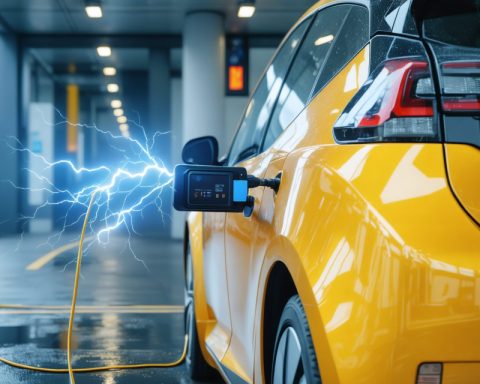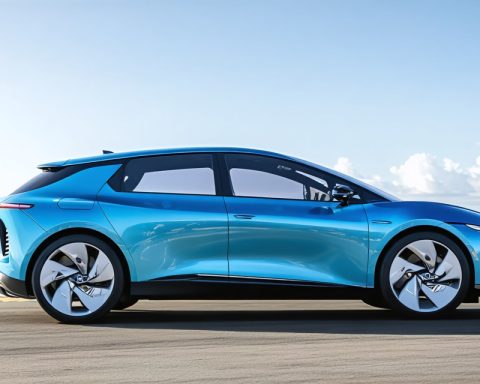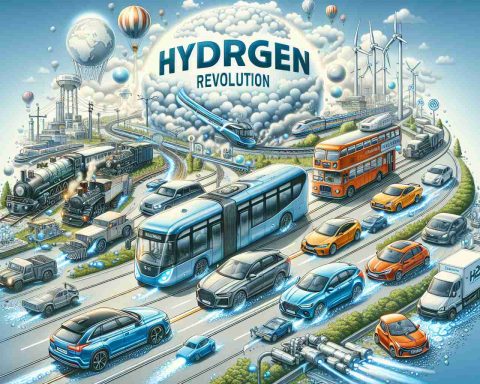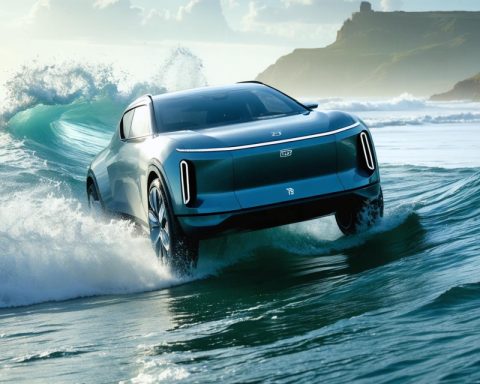- Hobart and William Smith Colleges (HWS) in Geneva, New York, installed 14 new electric vehicle-charging stations, boosting green innovation on campus.
- This expansion nearly triples existing charging ports, aiming for carbon neutrality by 2025, and was achieved with solar and wind energy use.
- Professor Tom Drennen observed increased electric vehicle use, prompting infrastructure growth expected to meet current and future demands.
- Project funding included $126,000 in grants, supported by Tom Murray of Lumalon and New York State Electric and Gas engineers.
- Charging stations are cost-free for users, encouraging greener lifestyles and reflecting HWS’s longstanding sustainable commitments since 2007.
- HWS Vice President Mark Edwards endorses making sustainability accessible and practical for both the campus and broader community.
- The initiative empowers students with impactful, hands-on experience in sustainability.
The quiet streets of Geneva, New York, are now humming with electric energy as Hobart and William Smith Colleges (HWS) power up sustainability with the installation of 14 new electric vehicle-charging stations. This forward-thinking step nearly triples the number of charging ports on campus, transforming HWS into a beacon of green innovation among small colleges.
Professor Tom Drennen, known for once owning the sole electric vehicle at HWS—a 2012 Chevrolet Volt—has witnessed the campus’s electrifying evolution firsthand. The surge in electric vehicles among students, faculty, and staff had left existing chargers continually in use, pushing the college to broaden its charging infrastructure by December 2024.
The expansion reflects a broader commitment to sustainable practices at HWS, dating back to 2007, when it pledged to achieve carbon neutrality by 2025. With these new additions, the college proudly announced that it reached this environmental milestone a year ahead of schedule, ensuring that every vehicle charged on campus leaves no carbon footprint thanks to energy sourced entirely from solar or wind.
Behind this ambitious project stands Tom Murray of Lumalon, the strategic mind in securing $126,000 in grants out of the total $200,000 needed. His expertise in funding energy-efficient projects played a pivotal role, with additional help from New York State Electric and Gas engineers who went beyond typical support, according to Chris Button, associate director for planning and construction.
But more than a technical triumph, these stations symbolize a shift in culture. With zero cost to users, the initiative encourages a greener lifestyle. Drennen, alongside a team of dedicated students, demonstrated that financial barriers could be sidelined for the greater good—a sentiment HWS Vice President Mark Edwards embraced wholeheartedly when he decided to provide this service free of charge.
The vision doesn’t stop with meeting current demands. With usage currently at 50% capacity, Drennen foresees the need for further expansion within five years, hinting at a future where sustainable transport is the norm.
By choosing to lead in sustainability, HWS not only sets a precedent for educational institutions but also engages students in meaningful, impactful work. For those part of this journey, the goal has always been clear: to make sustainability a tangible, everyday reality. It’s a powerful reminder that even small colleges can make a substantial difference, electrifying both campus life and the promise of a cleaner future.
The Future of Green Campuses: How Hobart and William Smith Colleges are Leading the Way in Sustainable Innovation
Enhancing Campus Sustainability with Electric Vehicle Charging Stations
The initiative by Hobart and William Smith Colleges (HWS) to install 14 new electric vehicle (EV) charging stations marks a significant step toward sustainability in higher education. This action not only triples the existing charging ports but also cements HWS as a leader among small colleges in environmental stewardship.
Why Sustainability Initiatives Like This Matter
1. Environmental Impact: The electrification of transportation is essential for reducing greenhouse gas emissions. HWS’s commitment to carbon neutrality, achieved ahead of its 2025 goal, illustrates the potential impact educational institutions can have on global sustainability efforts.
2. Educational Influence: By integrating sustainability into everyday campus life, HWS serves as a live learning laboratory for students. This hands-on experience in energy management and sustainable practices forms a critical part of students’ education.
3. Community Engagement: Free use of the charging stations removes financial barriers, promoting a wider adoption of EVs among students and staff. This encourages a shift towards sustainable transportation both on and off campus.
How-To Steps for Implementing EV Charging Infrastructure
– Step 1: Assess Demand and Capacity Needs. Evaluate the current use of EVs on campus and forecast future growth to determine the number of charging stations required.
– Step 2: Secure Funding. Explore grants and partnerships, as HWS did with Lumalon and New York State Electric and Gas, to cover installation and operational costs.
– Step 3: Engage Stakeholders. Involve campus leaders and the student body to gain support and ensure the infrastructure meets the community’s needs.
– Step 4: Leverage Renewable Energy. Source electricity from wind, solar, or other renewable providers to ensure a zero carbon footprint.
– Step 5: Plan for Maintenance and Future Expansion. Regularly assess the usage and effectiveness of the stations to plan for potential future expansions.
Pros & Cons Overview
Pros:
– Environmental Benefits: Reduces carbon emissions and supports broader climate goals.
– Economic Savings: Long-term reduction in transportation costs for campus community members.
– Increased Attractiveness: Appeal to environmentally conscious students and staff.
Cons:
– Initial Costs: Upfront investment in infrastructure can be significant.
– Maintenance: Ongoing upkeep and potential for technical issues.
– Space Requirements: Allocation of campus space for EV stations.
Market Trends & Future Predictions
– Growing EV Market: With electric vehicles expected to constitute a larger share of the automobile market in the coming years, the demand for charging stations will increase.
– Sustainable Campus Trends: Other educational institutions are likely to follow suit, increasing competition for funding but also promoting widespread adoption of sustainable practices.
Actionable Recommendations for Readers
– Adopt an EV Lifestyle: Consider transitioning to electric vehicles and advocate for charging infrastructure in your communities.
– Support Renewable Energy Initiatives: Engage with local governments and organizations to promote policy changes that support clean energy.
By investing in sustainable infrastructure like EV charging stations, Hobart and William Smith Colleges set a powerful example of how strategic planning and community engagement can lead to impactful environmental change. This initiative offers a model for other institutions seeking to reduce their carbon footprint and foster a culture of sustainability. For further information about Hobart and William Smith Colleges and their sustainability initiatives, visit their official website.














